
Cate Blanchett as: Catherine Ravenscroft
Director: Alfonso Cuarón
Selected Cast: Kevin Kline, Leila George, Sacha Baron Cohen, Lesley Manville, Kodi Smit-McPhee, Louis Partridge, Hoyeon, Indira Varma
Release Year: 2024
Genre: Drama
MPAA Rating: TV-MA (US), 18 (UK) (15 on some chapters)
IMDb | Photos | Videos | Watch on Apple TV+
“Disclaimer” is based on the bestselling novel of the same name by Renée Knight. Acclaimed journalist Catherine Ravenscroft built her reputation revealing the misdeeds and transgressions of others. When she receives a novel from an unknown author, she is horrified to realize she is now the main character in a story that exposes her darkest secrets.
As Catherine races to uncover the writer’s true identity, she is forced to confront her past before it destroys her life and her relationships with her husband Robert and their son Nicholas.
Related Images
View more images at the gallery.


The videos after the trailer are playlists of inside look at the series and selected interviews and conversations with the cast and Alfonso Cuarón, just click on the playlist icon/thumbnails to see the other videos in it.
- “What I became fascinated by was how a person can be altered in imperceptible ways when traumatic events are buried and remain unprocessed. People carrying around concealed trauma can have no idea how heavy this burden is, how deep their rage and shame.” (Vanity Fair, July 2024)
- “[Catherine Ravenscoft] subconsciously feared her rage would get out of control and so she avoided conflict, avoided standing up for herself or losing her cool with people for fear of her rage exploding. Catherine was to me a person who was misunderstood as being self-contained or stoic, when in fact she was someone who found it difficult to imagine she even had a right to feel anything.”
- “I think Disclaimer underscores how our very vociferous public judgments isolate us from each other and prevent common ground from being located. We keep falling into linguistic traps and eddying around our own perspective in events, rather than getting anywhere near the common ground of collectively understood truth.”
- On accepting the role: “I’m very director-driven because you can read the greatest script in the world, but it depends who’s going to be directing it, who’s looking down the lens. And the fact that, obviously, Alfonso is a writer/director, and you knew that the script was one part of the process of making a film.
My first encounter with the story was the reading of the script. And when we first spoke about it, it was a really short conversation. You [Cuarón] said, ‘Please, I don’t want to say anything. I just really want you to read the script, and then we’ll talk.’ And so it started from there, and so I was very much alive to what you wanted to do with it. You’ve moved across so many different genres and styles. This was an adventure for you in serialized storytelling, and how would you deal with a narrative that is handed out in parcels? The way the audience is going to consume it. I felt like you were on a personal, creative adventure. And so, I was really excited to be part of that.
It’s always when someone’s making a departure of some kind, which you always seem to do, you’re always setting off into the unknown. And then that’s really exciting. Whereas if someone’s in a groove, doing what they always do, you can go, ‘Ok, that’ll be great fun,’ but this felt slightly dangerous.” (Indiewire, September 2024) - On serving as executive producer for the series: “I don’t know how to judge myself as an actor, but I know that as a person I am an excellent collaborator. In this sense it was a natural transition. I think there is a misunderstanding: actors are not puppets who are told where to be and what to do, we are professionals full of ideas, not only about the characters, but about the work as a whole. So many of us move to other positions, to facilitate the work of colleagues, because we understand the pitfalls and opportunities of a script.” (Vanity Fair Italia, September 2024)
- On what attracted her to the character and working with Alfonso Cuarón: “The character was secondary. I was interested in filming with Alfonso and collaborating with him on this project: the first time he has made a seven-part film. It is a kind of experiment to see if cinema can exist on the small screen. Finding out how to do it and being part of this process was the real attraction for me. Also, he has two of the best directors of photography in the world, Bruno Delbonnel and Emmanuel Lubezki. As an actor, my relationship with the directors of photography is very important and deep, so working with them was fantastic.” (Harper’s Bazaar Spain, September 2024)
- On why each episodes are called chapters: “It sounds a little pretentious to call them ‘chapters,’ but it’s true. Somehow the intention that it be seen in a cinema keeps the ideas big, and I think allows you to reach dare I say a poetic reality that doesn’t always have to make narrative sense. That’s what I love about this – there’s a rhythmic sense to this series, or film, which defies I suppose more conventionally made things.” (Globe and the Mail, October 2024)
- “I was shocked at the layers of judgment that I transposed on the character. The challenge and agony of playing a character like this is that the crisis happens as soon as you meet her. We know nothing about her, only what people are saying about her.” (AP, October 2024)
- On the Ravenscoft family cat in the series: “[I was like], why is the cat there? And then I realized I think it was in the shot where I had to debone a fish — I was given the deboning fish lessons. My family ate quite a lot of fish during this shoot…. But then, just when I got the deboning right, when we had done a few takes, [Cuarón] is like, ‘Put the cat in.’” (THR, October 2024)
- On the finale: “It’s a reconciliation, in a way, with herself and with that past. The things that we run from or bury or think we can avoid end up becoming our psychological and emotional nemeses. And we didn’t talk a lot about it, but we both had an understanding that we all wear a lot of social masks. In a long marriage, you become something for the other person — what the other person needs you to do is a projection of what the other person believes you to be. And it was really important in that scene that there was no mask.
Sometimes we can’t unpack these things by ourselves. And I think why a lot of people don’t report violent assault is because by being not believed in the reliving of something is to be re-traumatized. I was hoping that at the beginning of that scene, you’d think, “Oh, this is going to be the reconciliation scene..” And, through the course of it, she realizes, “I don’t think I can reconcile with you.” But I didn’t want it to be that she gets vengeance on this man who didn’t believe her. Women aren’t seeking vengeance when they describe what they have felt. They are seeking clarity and understanding, often with themselves.” (Variety, November 2024) - On the confrontation scene in the finale: “It was a very, very long scene. It obviously happens in that particular chapter [in the book], but some of it was written in voiceover. If you go back and watch it again, there’s a whole soundscape that goes underneath that tells you what reality you are in. Alfonso didn’t want it to seem like voiceover, he wanted it to all come out as if the story was being told. And I said, “Well, let’s just shoot it then.” So it read like it was in voiceover, but then I think he ended up putting a lot more of it in the room rather than [flashing] back [to the vacation where it happened] in Italy.
And it was a tricky balance because some of those things are played in flashback and the audience has to recalibrate what they’ve accepted as being reality. At the same time, they’re hearing the genuine, true, completing perspective that rounds out what actually happened. Because, of course, the truth is a complex thing, and it’s made up of many different points of view. We often lean into one predigested point of view that’s easy to swallow and that doesn’t make us feel uncomfortable, one that we’ve seen before. And you’re asking the audience to reassess that and lean into one that perhaps makes them feel uncomfortable.” (THR, November 2024) - “The most satisfying thing I’ve heard is the fact that you watched it a second time. I can’t tell you the joy and relief that brings me. Because often with episodic storytelling, people either want to binge-watch it, or they’re time-poor, or watch it with two or three other things on board. And there’s so many almost imperceptible details that Alfonso has woven in — and encouraged us to weave into our performances — that hopefully it is rewarding to watch a second time.” (Los Angeles Times, November 2024)
Quotes from Others
- Alfonso Cuarón:
— On the use of second person for the narration in the series: “I’ve always been intrigued, because there are not many films that use the second person in narration. In Spanish and in French, the second tense is called accusativo. Accusative. It is accusing. That was part of the reason for creating that voice in the second person.”
— On the three voice-overs: “The point is to challenge the narrative. To challenge the viewer with their own narrative.”
— “What is clear is that Catherine is a very, very intelligent woman; [she’s] very smart, sophisticated, but also has learned to be able to wear masks — a mask with the family, a mask with her work, but also a mask with society at large. And when you are wearing the mask, the mask is just the exterior part. What is important is the person that is inside. I cannot think of anybody other than Cate [Blanchett] that can play that.”
— “When I decided to start writing the script, I was only looking at Cate [Blanchett] from the get-go.”
— “That last episode was very important, and Cate [Blanchett] was adamant about it working – not just as an actor in the film, but as a full-time collaborator. Her credit as an executive producer is not just cosmetic. She was very concerned about how we would not cheat at any moment. It is her work.”
— On the Ravenscoft family cat in the series: “It was incredible to see Cate suffering. Taking the cat away, cooking, but never missing a beat in terms of her character to perform the way that the character would be doing it. For me, it was a pleasure.
I have to say, Cate broke the cat. The cat ended up doing whatever Cate wanted. The animal trainer was very upset because he said: ‘It took me three years to teach this cat to go from A to B, and now the cat does do whatever it wants to do.’”
— On the finale: “The work for that moment was done throughout the other six chapters. That was the collaboration with Cate — she was adamant to make sure that every single detail of what we’re telling is the truth, that we’re not manipulating the information. When Catherine speaks, you realize that your perception was tainted by a judgment — not only of the other characters, but also your own judgment. She hasn’t been allowed to speak for so long; all of these characters have been shutting her up, and finally, you’re hearing her voice.”
— “When Cate finished that [confrontation] scene, at the end of the last take, she just went berserk. She was jumping around! It was clear that it was a big relief.”
— On the cats adding an element that cannot be controlled, which adds something unexpected to his direction: “I tend to be very controlling with my work and prepare a lot. What a cat gives you is that thing that nobody can control. If Cate is going to be cooking fish, just throw a cat in there. The cat is just going to try and eat that fish. You cannot control the whole thing of just staying there or not staying there. So it helps to create a unique moment. Through rehearsals, there’s something that is not a truthful moment. You put a cat in, everything becomes truthful.” - Kodi Smit-McPhee:
— On Cate Blanchett: “I think the word I’d use is magnetizing — she just has lovely energy. Cate could be having fun and having a laugh, and then, because she’s filming something extremely serious, she can just flip a switch and tap into her work. It’s rare to see an actor have that ability.” - Kevin Kline:
— On Cate Blanchett: “Well, I suppose we all do. But when someone’s acting with authority, you forget. It doesn’t matter what past things of theirs you’ve seen them do. There’s just a presence you react to. I’m not making any comparisons, but [affected voice] I’ve worked with some of the best. [Both laugh.] It was just great to watch how Cate works.” - Elizabeth Yianni-Georgiou (head of make-up department for the series):
— On why Cate Blanchett was not de-aged for the flashbacks: “We had a lot of tests because, originally, Cate might’ve done the younger part as well. In the end, they found Leila [George], and they decided to use her. It was a really wise decision on Alfonso’s side. Leila was such a great actor that you didn’t really need to change her face to make her look like Cate. You could leave the audience to believe it. There was a lot of talk about using VFX to make her look like Cate, but audiences have an imagination.
Leila also studied the way Cate played the role, and they spent time together and talked it through. Both actresses managed to pull that off—playing the same role but at different stages of their lives.”
Trivia & Facts
- The series premiered on 29 August 2024 (Chapters 1-4) and 30 August 2024 (Chapters 5-7) at the 81st Venice Film Festival as part of the Series section.
- Cate Blanchett serves as executive producer for the series as well.
- Alfonso Cuarón said that while he was writing the screenplay he thought of Cate Blanchett and could only see her for the role of Catherine Ravenscroft.
- Chapters 1-2 premiered on Apple TV+ on 11 October 2024.
- For the series, there are narrations, the narration for the scenes from the book is in third person, then Stephen Brigstocke (Kevin Kline) in first person, Catherine Ravenscroft (Cate Blanchett) in second person.
- Cate Blanchett and Kevin Kline earned nominations for Best Actress in a Limited Series and Best Actor in a Limited Series respectively from the Golden Globe Awards and Screen Actors Guild Awards, more accolades here.
- Cate Blanchett and Kodi Smit-McPhee also played mother and son in Barbican’s production of The Seagull (2025).
- Emmanuel Lubezki and Bruno Delbonnel serves as cinematographers for the series. Originally Lubezki is supposed to shoot everything with Cate Blanchett while Delbonnel with Kevin Kline and Sacha Baron Cohen. But when production began, Delbonnel said he shoot everything with Kevin Kline, some with Cate Blanchett and very few with Sacha Baron Cohen.
- The series’ working title is ‘Augustus’.
- They also considered the thought of having Cate Blanchett play the younger version of Catherine before they found Leila George. Cuarón visited Cate in Berlin in 2021 while filming TÁR to shoot a few tests and gauge the younger appearance.
- The confrontation scene between Catherine and Stephen is a 40-page monologue for Cate Blanchett.
- It is mainly prosthetics and makeup work to de-age Kevin Kline for some scenes in the series, though they have some help from the VFX team.


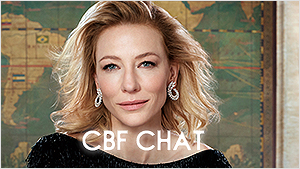
 A Manual for Cleaning Women (202?)
A Manual for Cleaning Women (202?)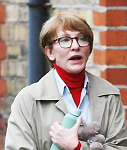 Father Mother Brother Sister (2025)
Father Mother Brother Sister (2025)  Black Bag (2025)
Black Bag (2025) 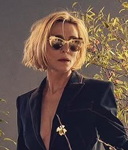 The Seagull (2025)
The Seagull (2025)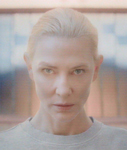 Bozo Over Roses (2025)
Bozo Over Roses (2025)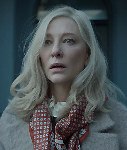 Disclaimer (2024)
Disclaimer (2024) 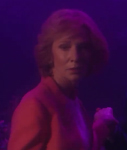 Rumours (2024)
Rumours (2024) 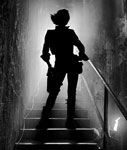 Borderlands (2024)
Borderlands (2024) 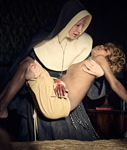 The New Boy (2023)
The New Boy (2023) 











